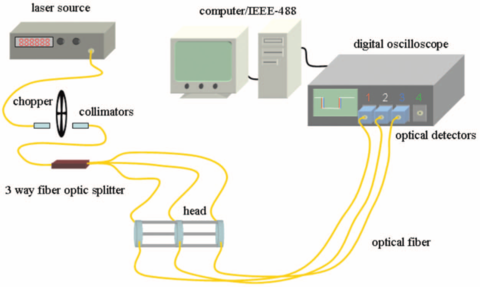Reference Ballistic Chronograph
The NIST-developed reference ballistic chronograph (RBC) provides repeatable measurements of the speed of a bullet that will impact a test article, such as personal body armor. For body armor, the measurement of speed is important because it is the basis upon which armor is certified to protect against threats. The chronograph measurement system is shown diagrammatically in Fig. 1.

The critical component is the “head” shown in Fig. 1, which comprises three measurement lines created using a laser beam. As the bullet crosses these lines, it blocks the laser beam to provide a rectangular optical pulse that is captured electronically and stored on an oscilloscope. A figure of the head is shown in Fig. 2 and the captured pulses, one per laser beam, is shown in Fig. 3.


Specifications/Capabilities
The RBC provides an expanded speed measurement uncertainty of less than 0.1 % of bullet speed with a 95 % confidence interval. This measurement uncertainty is about an order of magnitude better than the speed measurement errors claimed for commercially-available chronographs.

